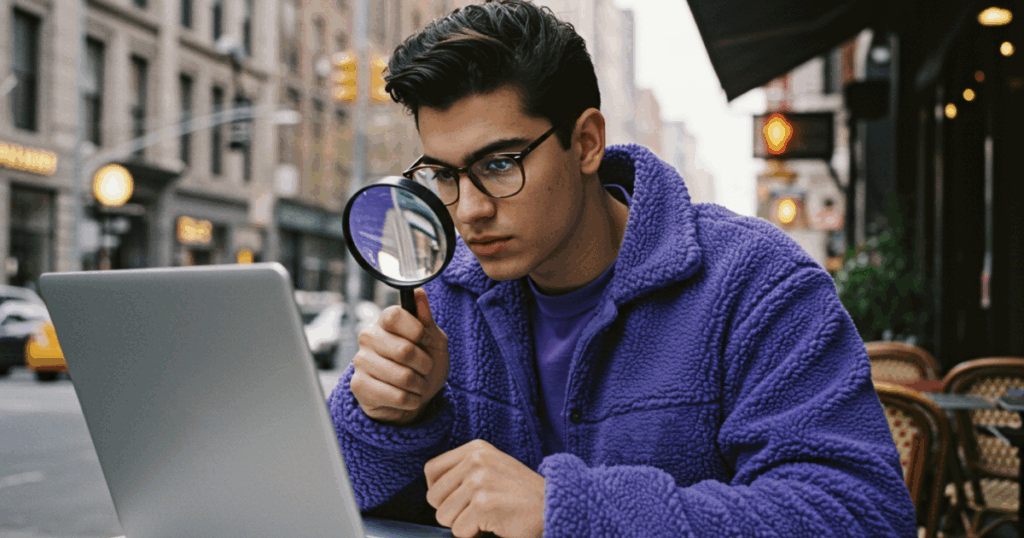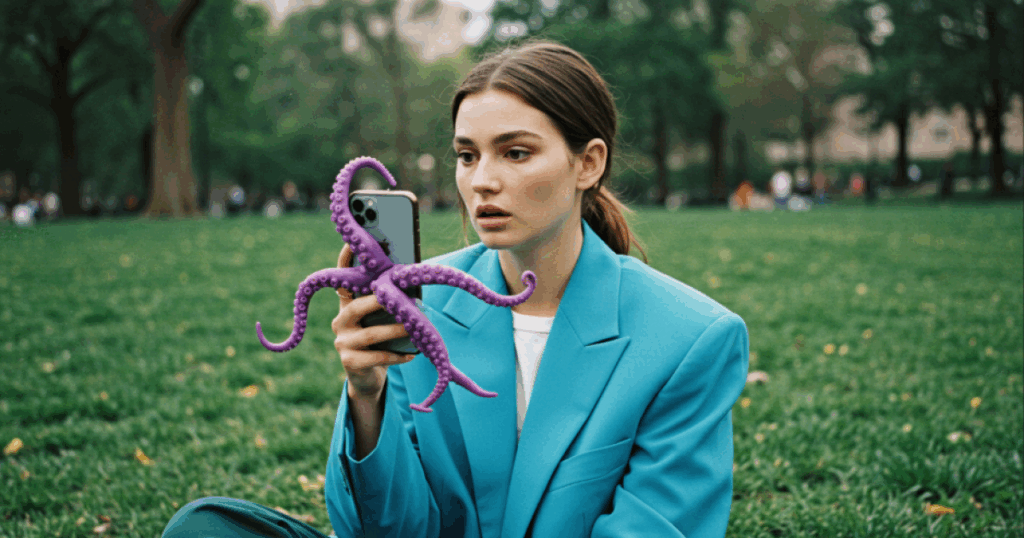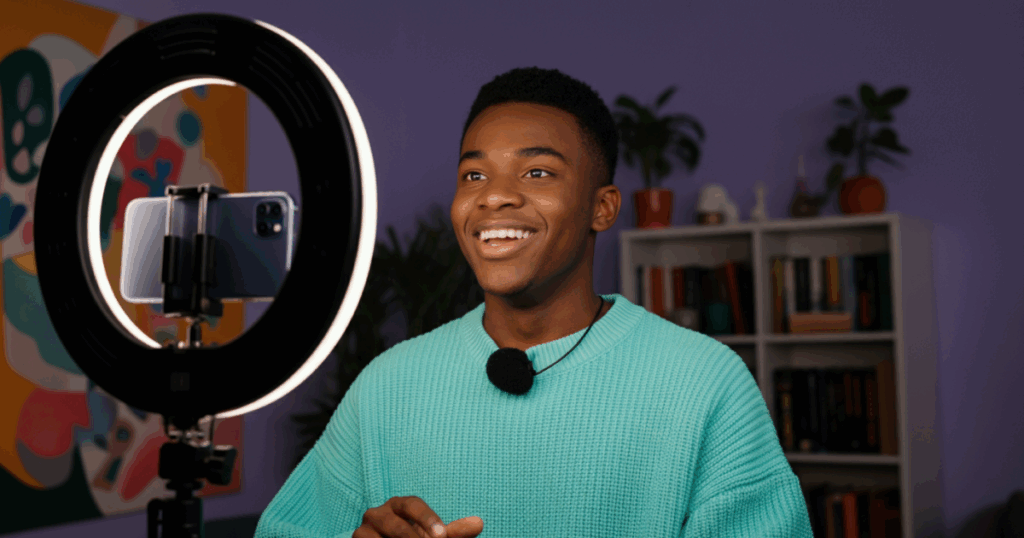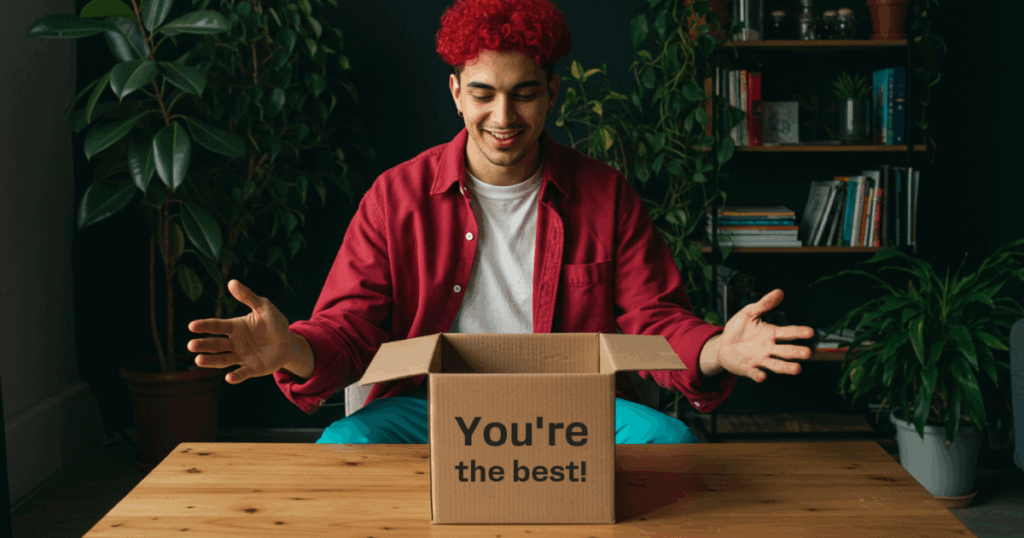So, you’ve got a brand deal offer sitting in your inbox. Maybe it’s an opportunity that could elevate your creator career. Maybe it’s a paycheck just waiting to screw you over. But let’s be real — you’ve been lowballed. You’ve had brands try to sneak in exclusivity clauses that made your head spin.
And don’t even get us started on usage rights.
Here’s how to tell if a deal’s trash or a smash. Spoiler: it’s all about the details, and the devil is ALWAYS in there.
When the Money Doesn’t Show Up

Travel creator and Manychat’s global social media manager, Melanie Demi, knows the struggle well: “I’m still owed like 25,000 dollars that I’ll never see.” Yep, you read that right — 25 grand.
Most creators don’t get paid upfront, so you could find yourself in a situation where the brand promises big bucks but drags its feet on payment. Or worse, never pays up. You’ve been chasing that invoice for months, while they enjoy their profit.
It sucks, but it’s part of the game.
💰Tip: Always, and we mean ALWAYS, have a contract that outlines when and how you’ll get paid. A 50/50 payment split is best: get half upfront, then the other half once your deliverables are a go. If they hesitate, it’s a red flag.
The Fine Print

Contracts are filled with boring jargon that makes your eyes glaze over. But the fine print is where they hide the traps. If you’ve ever signed a contract without fully reading it, you’ve probably regretted it at least once.
Sometimes, the brand asks you to sign off on using your content indefinitely. But if you don’t read carefully, you might not realize it until it’s too late.
Watch for sneaky language about exclusivity, usage rights, and payment terms. If something seems vague, ask for clarification. Don’t let them gloss over important details.
👀Tip: If the brand isn’t willing to simply explain a clause to you, be wary. Always get clarification (in writing) before signing anything. And if something doesn’t sit right, walk away.
Usage Rights (aka the Sneaky Clause)

Brands will try to pull the wool over your eyes by taking your content and using it however they please, even outside the campaign you agreed to.
One of Mel’s worst nightmares? That time she created a viral TikTok for a brand, and they used her content for ads without permission.
“They didn’t have usage rights. I emailed them, never got a response, and blasted them everywhere. They took me to court for defamation — but guess what? I sent them an invoice and told them to pay up or take the video down. Legal battle ensued.”
Yeah, always get usage rights in writing. Without it, they could slap your face on billboards without your consent.
➕Tip: Never sign a deal without specifying the usage rights. Be clear on whether the brand can use your content for paid ads, organic content, or beyond the scope of the campaign. If it’s not explicit, you could be getting screwed.
Exclusivity: You’re Not Their Only Lover

Don’t get tangled up in exclusivity unless the money’s right.
“Watch out for when they sneak in those exclusivity rights,” Mel warns.
When a brand asks for exclusivity, ask how much they are willing to pay.
On one hand, it ensures you’re the only creator promoting that brand, which could benefit your reputation and your relationship with it. On the other hand, you’re tying yourself down, meaning you can’t work with their competitors for a period of time. Don’t entertain the idea if they aren’t offering serious money for that privilege.
💔Tip: If they insist on exclusivity, negotiate the hell out of it. Up your rates and make sure the terms are clear. Otherwise, just say no.
How Much are They Really Letting you Create?

As a creator, one of the biggest perks of a brand deal is the creative freedom to make content that feels true to you. But not all brands are cool with giving you complete creative control. Some will dictate exactly what your post should look like, down to the font and color scheme.
“Some brands try to micromanage everything. They want total control. I can’t work like that,” Mel said.
Brands that insist on controlling every detail don’t get it. They don’t understand the value you bring as a creator, and they don’t respect your audience. Don’t be afraid to turn them down if they want you to be their puppet.
🎭Tip: Always negotiate creative freedom into your contract. Be clear on the deliverables, but fight for the ability to be yourself. If a brand is hesitant to give you room to create, it might not be the right fit.
Know When to Say No

The influencer world is intense — constant demands, high expectations, and gnawing pressure to deliver. Brands don’t always consider your emotional well-being when they hit you with last-minute requests, unrealistic deadlines, or rude behavior.
Mel’s advice here is golden: “There are brands I’ll never work with because they’ve been disrespectful, demanding, or just straight-up rude. Protect your peace. Mental health comes first.”
You can say no to brands that don’t treat you right. Your time, energy, and mental health are worth more than any paycheck. Feel empowered to walk away if a brand crosses a line or makes unreasonable demands.
❌Tip: Set boundaries early and don’t be afraid to enforce them. If a brand makes you feel stressed, undervalued, or anxious, it’s time to let them go.
The “Exposure” Lie

One of the oldest tricks in the book is when a brand offers you “exposure” instead of payment. You know the deal: “We don’t have a budget, but this will expose you to millions of people!”
If only exposure paid the bills.
Brands will try to pitch exposure as if it’s a valuable currency. It’s a trap. While exposure can lead to future opportunities, it’s not a substitute for cash. Don’t let brands undercut your worth by offering exposure instead of paying you what you’re worth.
🤑Tip: Politely decline if a brand offers you exposure in exchange for content. If they’re serious about working with you, they’ll come back with a budget. Don’t let them devalue your content.
How to Deal with Last-Minute Requests

Drop everything you’re doing to cater to a whim? Nah. Their urgency is not your emergency.
“I’ve been asked to create content in two days. Sorry, that’s not happening without extra pay,” Mel said.
Brands who expect lightning-fast turnarounds are trying to take advantage of your time. It’s important to protect your schedule and charge for rush orders. If a brand is unreasonable about timelines, you need to clarify that time is money.
⏳Tip: If a brand wants content in a short amount of time, ask for a rush fee. You’re not a 24-hour content factory.
Handling Sponsorship Disclosures

The FTC requires creators to disclose when they get paid to promote something, but transparency goes beyond legal obligations. It’s about respecting your audience and keeping their trust.
Mel always discloses when something’s a paid partnership. “My followers trust me, and I don’t want to break that trust.”
Disclosing sponsorships helps you maintain authenticity with your audience. If you’re not transparent about sponsored content, your followers will see right through it, and your credibility could take a hit.
💯Tip: Always disclose paid partnerships clearly and early in your content. It’s the right thing to do — and your audience will appreciate your honesty.
When Free Products are Actually Worth It

Not every brand deal needs to come with a paycheck. Sometimes, a free product can be worth more than money, especially if you want or need it.
Mel’s stance: “I’ll accept free products if it’s something I would actually use. Like this air purifier I promoted — I loved it, so I was happy to post about it.”
But you have to be discerning. Not every freebie is worth your time, and some brands might try to throw you cheap swag in exchange for your valuable reach. Make sure the product aligns with your brand, and don’t let a brand talk you into posting just because they’re giving you a free sample.
🛍️Tip: Be picky about free product deals. If the product is something you genuinely care about and would use, it’s worth considering. Otherwise, pass.
You’re Not a Beggar

Negotiating with brands can feel intimidating, but you have more power than you think.
Mel’s advice? “You should always aim high. There’s almost always room for negotiation.”
Brands are used to negotiating, so don’t get scared off by their first offer. If they accept immediately, that’s probably a sign your rates are too low.
“Ask for more. Protect your time and your worth,” she says.
It might feel uncomfortable, but if you don’t advocate for yourself, no one else will.
💲Tip: Always ask for more than you think you’re worth. If the brand wants to work with you, they won’t take away the offer just because you tried negotiating with them.
Vet the Brands

Not all brands are created equal, and neither are their audiences. Before you sign any deal, you need to know who you’re working with.
Mel advises that you always research brands before agreeing to anything: “I don’t work with brands I don’t know. I request a product or sample first.”
🧐Tip: Do your research. If you wouldn’t use the product yourself, don’t promote it. Your audience will see right through it.
Don’t Settle for One-Offs

One-off collaborations are nice for a quick paycheck, but they rarely build sustainable income or a strong relationship with the brand.
“I try to aim for long-term campaigns,” Mel said. “The more my audience sees me working with a brand, the better the content performs.”
Long-term campaigns offer something one-off deals can’t: predictability. You know when you’re getting paid, understand your deliverables and travel schedule, and have a clear vision for your partnership.
💍Tip: When brands approach you for a one-off campaign, ask about the possibility of a longer-term deal. If they’re not interested, it’s probably not worth your time.
Get Your Respect

When Mel got to work with brands like Marriott and Southwest Airlines, she saw firsthand how the right partnerships can lead to amazing creation.
“One of my favorite experiences was working with Marriott for a contract that took me to Mexico City,” Mel said. “It was a mix of deliverables, but the best part? I got to hang out with their team and create content while traveling. The Marriott team was amazing; they put so much thought into working with creators. It felt like a true collaboration.”
She said it wasn’t just about content for them, but about understanding her perspective and how they could create something meaningful together.
“That’s the kind of partnership I’m looking for.”
Southwest Airlines has also allowed her to create content that resonates with her audience.
“They let me create content that feels true to my audience and voice,” Mel said. “That kind of freedom is everything. When I can be authentic, the content performs better and the audience responds.”
When is it Time to get a Manager?

For many creators, transitioning from solo hustler to someone with a team behind them is big. At some point, you’ll realize that you just can’t do it all, especially when the money starts rolling in, the deals get bigger, and your workload goes through the roof. That’s when Mel knew it was time for a manager.
“I missed out on so much payment because I was always working full-time while doing this. It finally clicked. I needed a manager who could handle the business side of things: chasing down payments, dealing with brands, negotiating deliverables. The negotiation process alone could take months, and that’s not even counting the actual content creation. Getting a manager was the best thing I’ve ever done.”
Many creators hit a point where they realize they’re stretched too thin and the emotional and logistical burden of handling everything themselves is starting to take a toll. So, how do you know when to pull the trigger and get a manager?
Let’s break it down.
1. You’re juggling too many balls
If you’re constantly bouncing between content creation, negotiations, payments, emails, and figuring out legal jargon in contracts, it’s time to consider getting help. As a creator, you want to focus on what you do best — making great content. Let someone else take care of the backend stuff.
2. You’re missing payments or getting ghosted
You’ve worked hard, created the content, and sent it off, but the brand is dragging its feet on paying you. If you’re constantly chasing down invoices and realizing you’re losing money because you didn’t follow up, that’s a sign you need someone in your corner who can handle that.
3. You’re getting burned out
Creator burnout is real. If you feel mentally drained by managing the business side of your career or overwhelmed by the constant hustle, a manager can take that burden off your shoulders.
4. Brands are taking advantage of you
The influencer world can be wild. Brands often try to pull one over on creators who don’t know how to advocate for themselves. If you find yourself accepting deals that don’t feel right, not negotiating the best terms, or dealing with disrespectful brands, it might be time to bring in someone who knows how to protect your interests.
5. You need legal help and support
Things get complicated when you start getting larger deals, especially with big brands. That’s when having someone with a legal background comes in handy. They can read contracts, protect your intellectual property, and ensure you’re not signing away your rights. A manager with a legal team can help keep you safe from shady contracts.
Hiring a manager isn’t a sign of weakness. It’s a sign that you’re growing your business and taking it seriously. The right manager will help you focus on what you do best and ensure that your deals are legit, fair, and pay you what you’re worth.
It’s one thing to be a solo creator hustling to make ends meet; it’s another to be a business owner. When you realize that managing your brand deals and creative output isn’t sustainable by yourself, it’s time to hand over the reins to someone who can help you scale. And trust us, once you have a manager on your team, you’ll wonder why you didn’t make the move sooner.
You’re the Boss of Your Brand Deals

You’ve got to remember that you’re building a business. And businesses don’t operate on goodwill but on fair pay and mutual respect.
Mel’s final piece of advice: “The influencer space is still young, and there are a lot of brands out there who think they can pull one over on creators. Don’t get taken advantage of. Take control of the narrative.”
Don’t just say yes because the money sounds good. Ask the tough questions, negotiate the right terms, and walk away if it doesn’t feel like a win. After all, this is your career, and your worth goes way beyond the paycheck.







